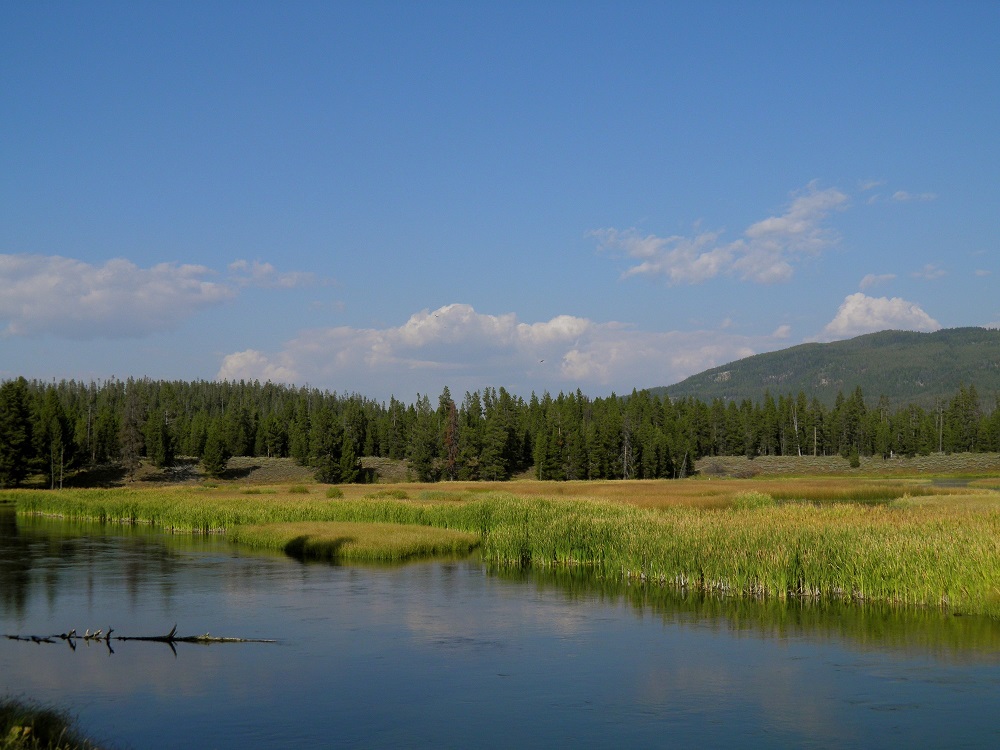
Quick Facts about GEOG 431 - Geography of Water Resources
Spring 2023
Instructor: Lauren Broyles
Course Structure
An average of 10-12 hours a week for 15 weeks. Your workload may be more or less, depending on your personal working style.
Overview
Geography 431 is designed to further understanding of the natural processes of aquatic ecosystems, management of water resources, and threats to sustaining water quantity and quality - for all types of freshwater - surface, ground, rivers, lakes, wetlands ... for geographers, ecologists, earth scientists, engineers, planners, other environmental professionals as well as those in non-science fields. This course will develop awareness and appreciation of the multiple perspectives about water as a precious resource, commodity, and sometimes hazard. We will learn how and why water is distributed unevenly in space and time around the Earth. We will examine the ways in which resource management decisions made in human society are strongly related to the availability, quantity, and quality of water. The course examines water resources management, including issues surrounding irrigation; dams and dam removal; provision of safe potable water; threats to water quantity and quality including human and aquatic ecosystem effects; land use changes; the water economy including bottled water, privatization, and water as a free good; water laws and policy; institutions for water management at the global, national, regional, and local scale; and issues of water security and climate change.
What it is and what it is not
Geography of Water Resources is, in part, about scale—spatial and temporal. We will emphasize the former, from a drop of water flowing to the oceans; however, the focus will be on the nature and distribution of freshwater resources on Earth. These make up less than 3% of the water found on our Blue Planet, yet access to sufficient quantities of clean, freshwater is essential for most organisms that live beyond the reach of the oceans. During this course, we'll explore briefly the processes that produce a single drop of water, and then follow where it falls during a precipitation event, which strongly influences its fate. We will learn that:
- water is unevenly distributed in quantity and quality (and the reasons why);
- water is transient and does not respect human-imposed borders;
- demand for water is not evenly distributed in space and time.
This is not a basic course in hydrology. We'll review a generalized hydrologic cycle and then examine how it varies around the world, based on latitude, temperature, precipitation, topography, and soils, but we will not spend time estimating or computing detailed water budgets for specific places or projects. By gaining familiarity with the Köppen system of classification for climates worldwide, we'll come to understand the unevenness in distribution of freshwater and how that leads to inequities in availability and access for human populations.
From a geographical perspective, we can perhaps gain a universal outlook regarding the unique properties, the diverse uses, and the intense conflicts that do arise when water availability is the issue. One goal of this course is to provide a common language for the inevitable collaborations needed among the array of professionals and practitioners from the fields of engineering, natural sciences, and social sciences that work to conserve and manage water resources. For example, the importance of providing minimum flows to support aquatic ecosystems, that is understood by ecologists and environmental scientists, must be understood by managing engineers. Likewise, the operation and management of water control structures and the regulation of water quality standards (WQS) must be comprehensible to consulting ecologists if productive dialogues are to take place among members of interdisciplinary teams.